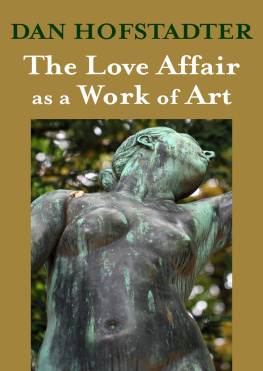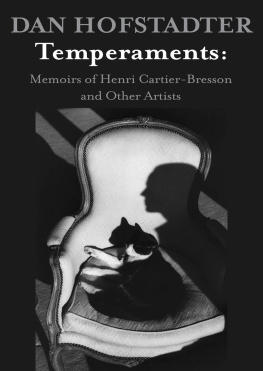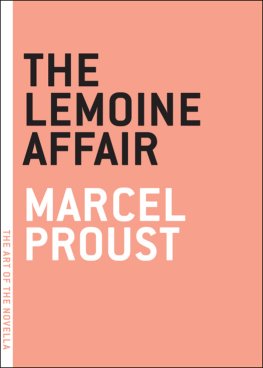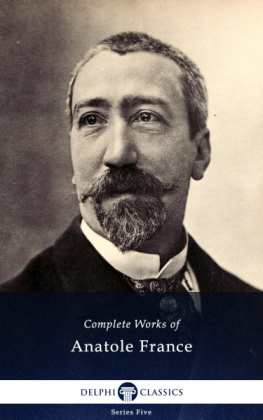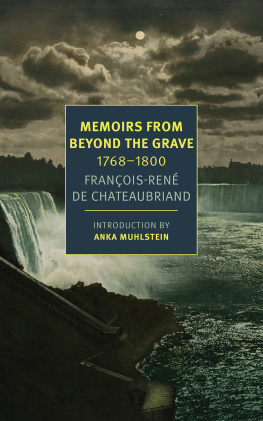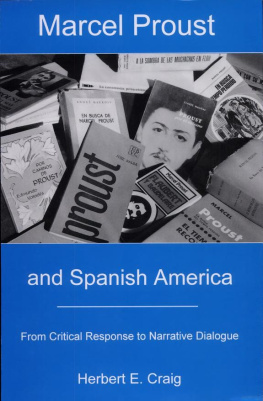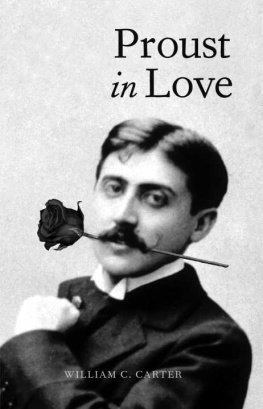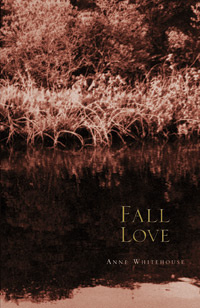The Love Affair as a Work of Art
Dan Hofstadter
A HOSTILE SENSIBILITY
Benjamin constant is one of those European writers who have never really made it over here, never been asked to join in the American jamboree. Seedy, anxious, and faintly disreputable, his shade can sometimes be found among the invited guests, wittily talking or being talked about, but basically hes a friend we wish we didnt know. Few English-speaking people are familiar with him, and most of those who are are not inclined to pursue the acquaintanceship. His political theory remains a subject for specialists, and his one great novel, Adolphe, published in 1816, is affection-repellentfemale readers especially find it very hard to take. It is true that Constant has passed into the annals of gossip, since he was consort of a lady, Madame de Stal, who continues to interest us; but even in this role he is elusive. We Americans have a wide range of colloquial qualifiers for the word loverwe speak of Latin lovers, demon lovers, and just plain great loversbut this dry fellow doesnt rate any of them. Though his accent was French, his forebears came from the humid and quite un-Latin province of Artois; his only demon was the imp of self-analysis; and he seldom seemed capable of much fondness for anyone, least of all himself.
When his friend Julie Talma died, of tuberculosis, at the age of forty-nine, Constant wrote a eulogy that came to serve as a milestone in the history of French letters. The year was 1805almost two hundred years agobut reading his grief-stricken lines we still feel that they summon us to mourn not only the death of one person but romantic love itself. Julie was the ex-wife of the great classical actor Franois-Joseph Talma; she had suffered much and was widely admired for her elegant fortitude. She was also able to think like a man, and one of her talents, Constant tells us, was for helping lovers out of hopeless situations, consoling the lady for being discarded while explaining to the gentleman the manner of disentangling himself with the least possible brutality. (It didnt seem to occur to Constant that sometimes a woman might want to be free of a man, and here he betrayed not only the prejudices of his era but also a secret of his intimate life. He was thinking, as it happened, about himself and a certain Anna Lindsay, and about Julies role as a mediator between them; that she had strenuously objected to his treatment of Anna he conveniently banished from his mind.) Constant thought that Julie had grasped the abhorrent, blinding truth about love: that the natural state of one sex is only the passing fever of the other. She had had the courage to admit that
a woman who has given away her heart and the man who has obtained it stand in precisely inverse positions. The woman begins to have a purpose, that of keeping her lover, for whom she has made what feels like a great sacrifice; whereas the man ceases to have a purpose, since what has been his purpose is now a bond. Small wonder that two people placed in such an unequal relation will soon be unable to get along, and that is why the institution of marriage is so admirable: to supplant a goal that no longer exists, it proposes common and enduring interests.
Here, in a few sentences, was the theme of Adolphe, which Constant began writing about a year later: that a man and a woman want such different things from love that they naturally tend toward dissension. Its a restatement of the ancient idea that love is an antinomy, and it forms the cracked pedestal of the art of fiction in nineteenth-century France.
With this notion Constant turned his back on Jean-Jacques Rousseau and looked ahead toward the decades of positivism. There are stirrings of proto-social Darwinism here, intimations of the sociobiological theories of human mating that have gained credence in our own day. But if he had some of the prophets wild foresight, he also had much of the superficiality, the smug reductionism, of the modern social scientist; and with the surmise that some simple explanation could be found for the infinitely varied, colorful folkways of the war between the sexes, he drifted into a sort of schematic thinking that would impoverish his powers as an artist. Genuinely oracular, Constants message also has the oracles deeper obscurity and crossed purposes.
His own posthumous fortunes as a novelist were mixed. Despite all that continues to be said and written about him, despite the discovery of more and more of his private papers in attics and archives, few people now read him for pleasure, as George Eliot and Middleton Murry and Harold Nicolson once did, and we may suspect that this holds true even among the French. Constant is studied, but he isnt enjoyed. In the mid-1920s, Guy de Pourtals described Adolphe as a creature who had lived on into our own century, a type who might still be spied haunting the streets of Paris; one might add that since then he has made his way to London and New York, where he is daily sighted all over the place. We see him in cafs, in theater foyers, haggard, nervous, biting his lip; he slouches through the features pages of the womens magazines. Perhaps a student or an intellectual or a mediacrat, this fair-haired boy seems devoted to an adoring soulmate, but on a deeper level his emotions are stunted; hes unable, as the magazines say, to make a commitment. Hes the counterpart and archenemy of that equally ubiquitous figure the girl who desperately wants to get married. A peculiarly modern type? It may be: Pourtals said that in creating Adolphe, Constant had enriched the world with a new form of suffering. Yet we may also suspect that hes as old as our species.
Adolphe is devoid of self-irony, of humor, and this humorlessness is one of Constants problems as a writer. Yet for anyone interested in how to get from the dirty laundry of life to something fit to hang out on the literary line, his imaginative use of certain tones of voice repays close scrutiny. One of these tones, which perhaps engenders all the others, is that of disenchanted filial affection. Defying convention, Constant dispensed with the reverential note in discussing his father, whom he talked about as a lovable but exasperating equal. In our own era of filial impiety, such a tone is not uncommon; whats unusual is that old Colonel Juste de Constanta man of archaic formality, a father almost of stoneis portrayed in luminous language which reaches across the years. Constants tone of recollection, as virtually all his expositors have noted, mingles the elegiac with the guilt-ridden: he felt that the past could never be candidly or honestly treated without some tincture of remorse. In another manipulation of tone, which today we might call narcissistic, he flaunted his unhappiness, his timidity, his doubts, qualms, and scruples, but it is his misfortune that this tone does not appeal in writing as it does in speech. In a friend, as in a stand-up comic, such foibles may be charming, which Constant the man apparently was; but on the printed page they seem self-induced, as though the writer is malingering or maybe just pleading for sympathy.
One of the strangest things about Constants private writing is that he apparently pursued itnot always, but oftenas a sort of makeshift expedient or poor substitute for some other, more active pursuit. It was a reflection on what he would have done if hed had the presence of mind, or a rehearsal of what he ought to do if he could summon up the nerve. Stung into writing by his obsessions, by the bees in his bonnet, he seems unable to pace himself, to allow his mind any leisure or margin of maneuver. This poorly measured pace gives his diaries, which are largely devoted to his tie with Madame de Stal, a weirdly claustrophobic and, to be frank, largely subliterary quality, like that of a neurotics logbook or errand list. Constant had no gift for capturing conversations, no gift for describing people or places. It is unfair, of course, to compare this poor-substitute writing to the glossy finish of a novel like

